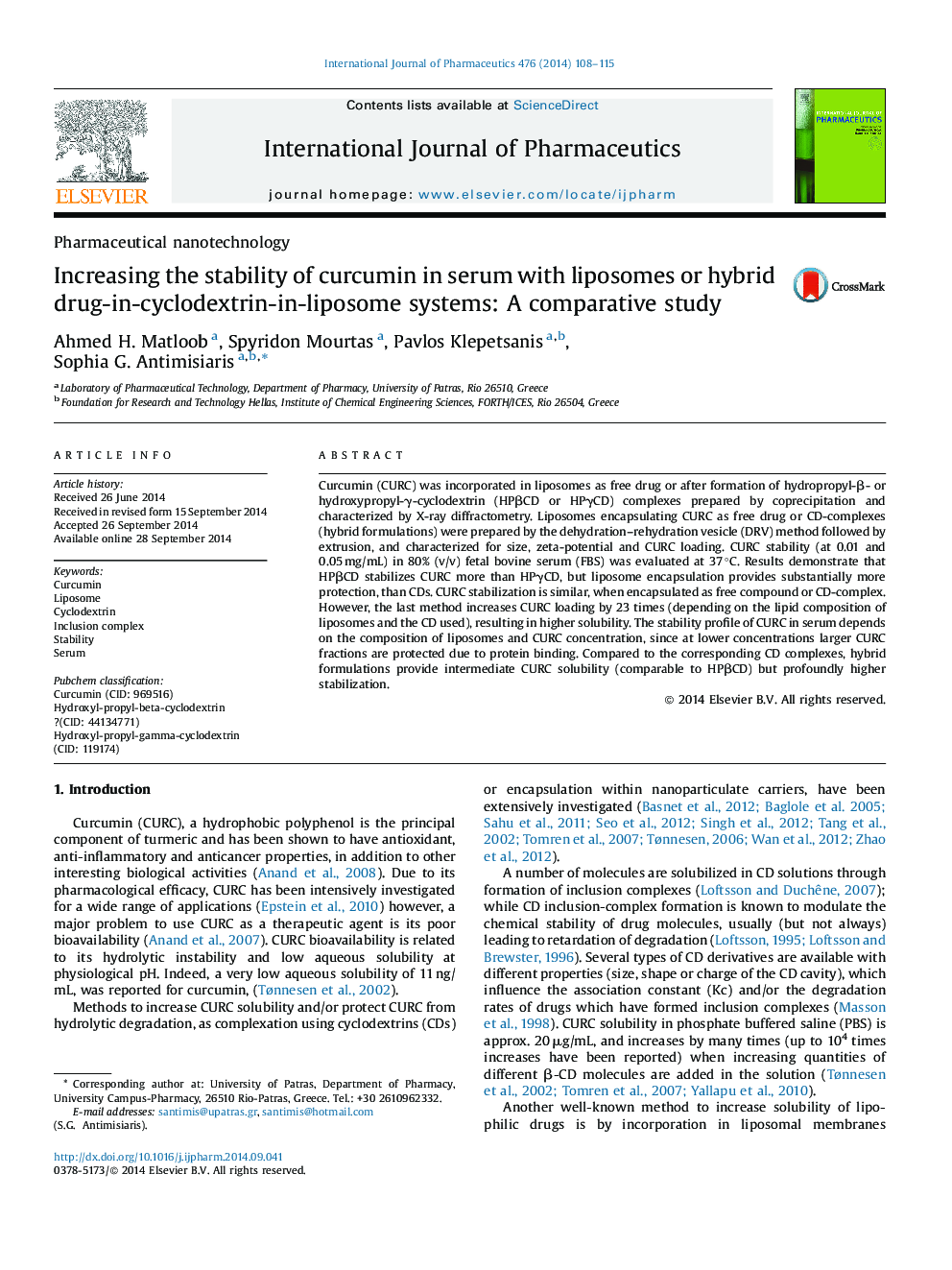| Article ID | Journal | Published Year | Pages | File Type |
|---|---|---|---|---|
| 2501710 | International Journal of Pharmaceutics | 2014 | 8 Pages |
Curcumin (CURC) was incorporated in liposomes as free drug or after formation of hydropropyl-β- or hydroxypropyl-γ-cyclodextrin (HPβCD or HPγCD) complexes prepared by coprecipitation and characterized by X-ray diffractometry. Liposomes encapsulating CURC as free drug or CD-complexes (hybrid formulations) were prepared by the dehydration–rehydration vesicle (DRV) method followed by extrusion, and characterized for size, zeta-potential and CURC loading. CURC stability (at 0.01 and 0.05 mg/mL) in 80% (v/v) fetal bovine serum (FBS) was evaluated at 37 °C. Results demonstrate that HPβCD stabilizes CURC more than HPγCD, but liposome encapsulation provides substantially more protection, than CDs. CURC stabilization is similar, when encapsulated as free compound or CD-complex. However, the last method increases CURC loading by 23 times (depending on the lipid composition of liposomes and the CD used), resulting in higher solubility. The stability profile of CURC in serum depends on the composition of liposomes and CURC concentration, since at lower concentrations larger CURC fractions are protected due to protein binding. Compared to the corresponding CD complexes, hybrid formulations provide intermediate CURC solubility (comparable to HPβCD) but profoundly higher stabilization.
Graphical abstractFigure optionsDownload full-size imageDownload high-quality image (217 K)Download as PowerPoint slide
